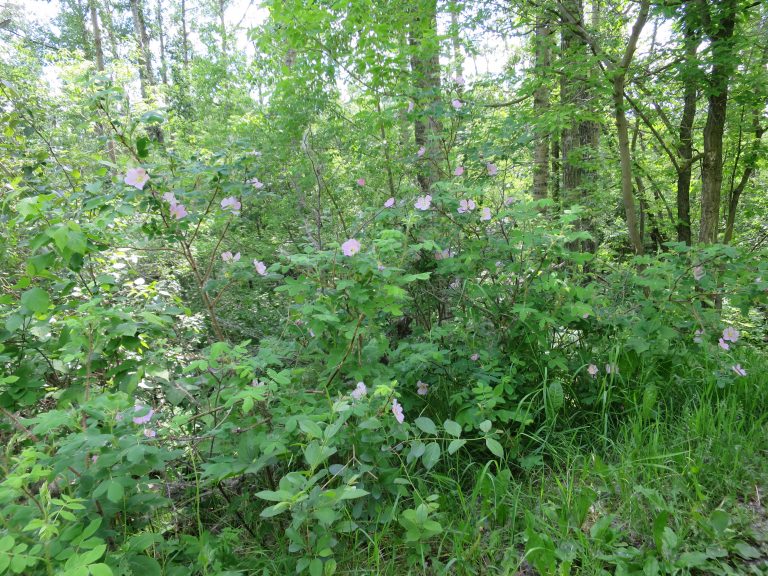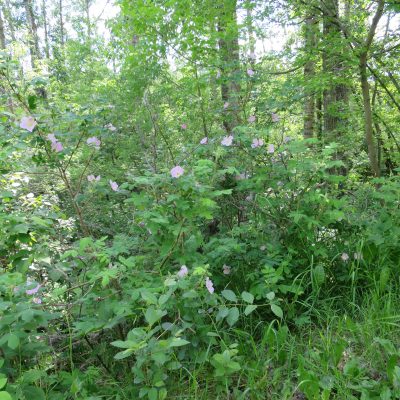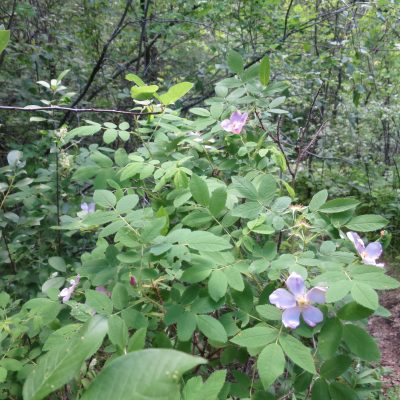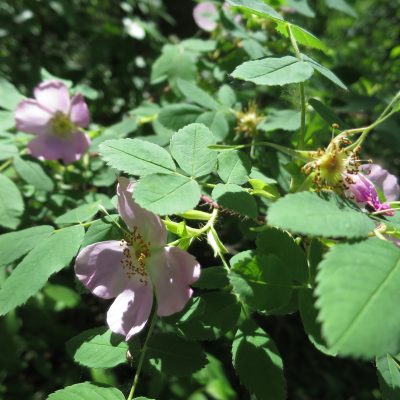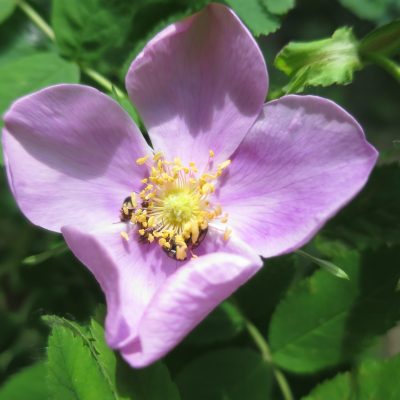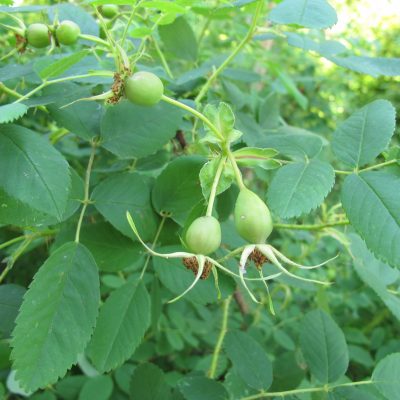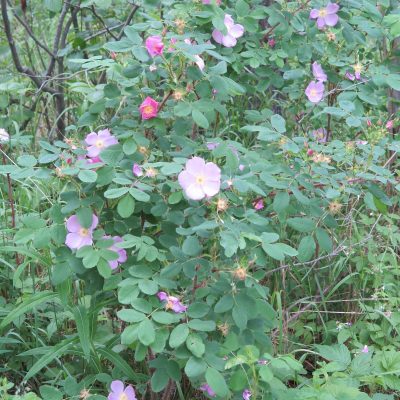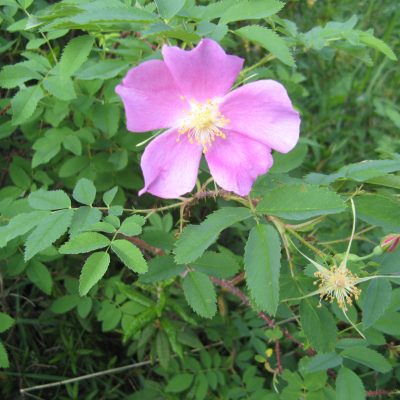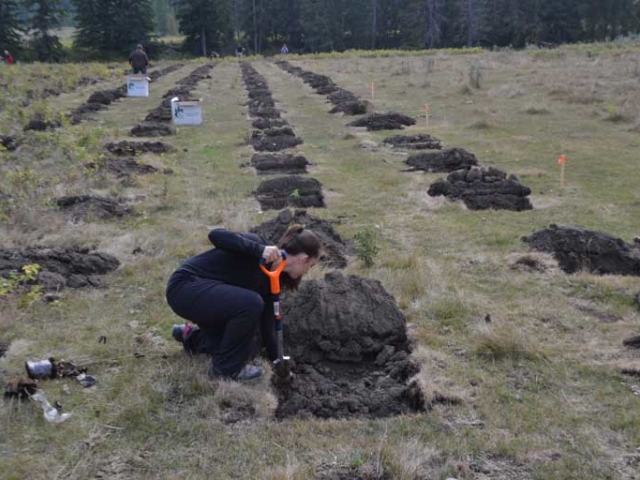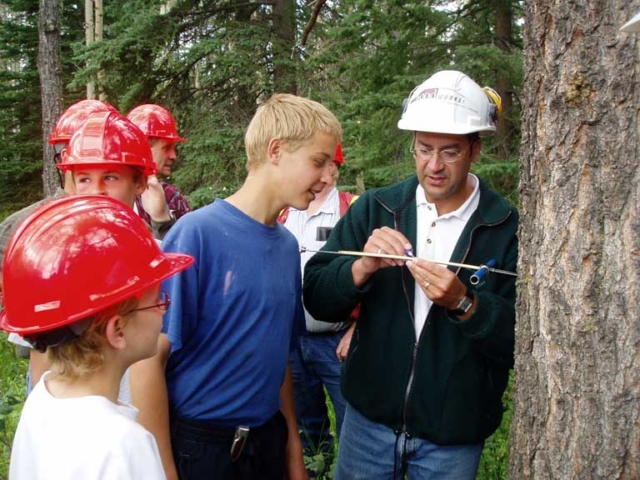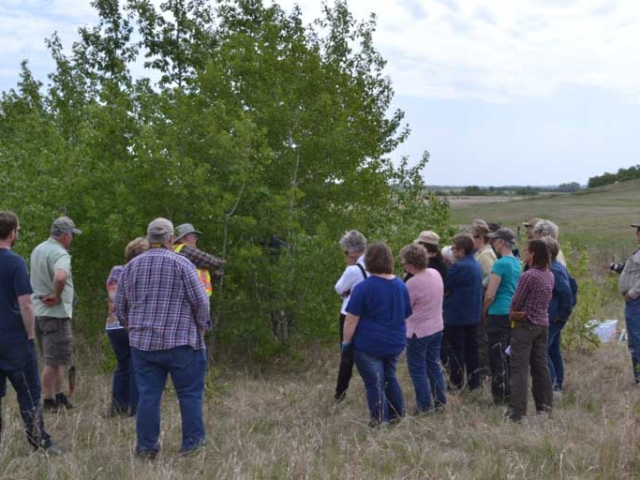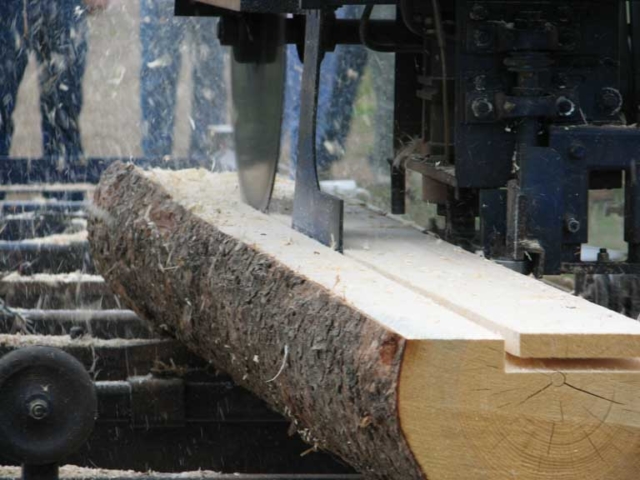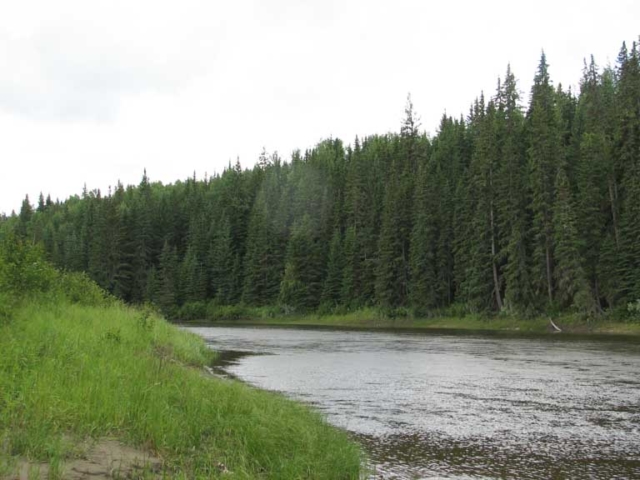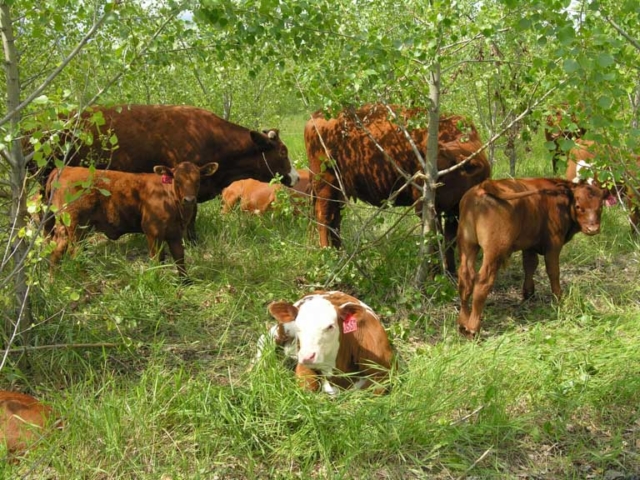Description / Details
Prickly rose (Rosa acicularis)
Alberta’s provincial flower is a tough and adaptable shrub that suckers profusely. It thrives in sites ranging from dry grassy hill slopes to moist forest understories. Its flowers have excellent pollen and nectar resources, and its hips provide a long-lasting food source for birds throughout the winter. Its petals and hips (high in vitamin C; strain out the pits to improve taste) can be used to make tea, jellies, jams, vinegars, syrups, or eaten fresh.
Prickly rose looks similar to wood’s rose, but whereas wood’s rose only has thorns at the base of its stems, prickly rose has thorns all the way up its stems.
Prickly rose is an excellent understory or outer row shrub for Eco-Buffers, and is also suitable for the upper edges of riparian buffers.

